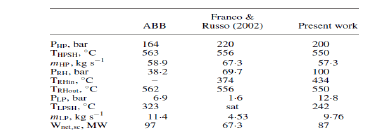
The characteristic residence time of a fluid particle is τ= l/ u, which, for l=10 m and u=5000 m/s, is only 2 ms during which time it may pass through different pressure and temperature regions. In a hypersonic flow field, the temperature experienced by a fluid particle may vary considerably as it passes over the spacecraft. The brief analysis presented here is based entirely on equilibrium or frozen chemistry in which chemical reactions take place infinitely rapidly or not at all, respectively. In addition to the effect of chemical reactions on the thermodynamic properties of air as described in the previous chapter, it is also important in the analysis of heat transfer to the spacecraft, a topic which is covered in this chapter. Equilibrium constants for dissociation and ionization for oxygen and nitrogen.

Observation (i) suggests that the dissociation reactions are approximately independent and given byįigure 9.3. These approximations are based on the results of detailed calculations, which show that for all pressures of interest, (i) dissociation of oxygen molecules is essentially complete before dissociation of nitrogen molecules begins and (ii) that ionization of nitrogen and oxygen atoms occurs at about the same temperature with about the same energy changes. For preliminary design purposes, we may use the approximations for the equilibrium species concentrations for high-temperature air presented by Hansen (1959). The chemical behavior of air under atmospheric entry conditions can be very complex and for a detailed treatment, see, for example, Park (1989) and Anderson (1989). Accordingly, shocks with M ms M c are called supercritical.Īs described in the thermodynamics section of the previous chapter, the adiabatic compression of the bow shock increases the temperature and pressure to levels where chemical reactions and ionization of the air must be considered in evaluating heat transfer to the spacecraft. Theory predicts that the shock structure should change drastically when the downstream plasma velocity exceeds the downstream sound velocity ( Kennel et al., 1985 Kennel, 1988). The most important shock parameter is its Mach number, either Alfvén M A = V u/v A (where V u is the NIF upstream plasma velocity and v A is the Alfvén velocity), or magnetosonic M ms = V u/v F (where v F is the fast magnetosonic velocity). Another parameter used for shock classification is the kinetic-to-magnetic pressure ratio β = 8π nT/B 2. The angle θ Bn is one of the main shock parameters according to which shocks are classified as quasiperpendicular θ Bn > 45° and quasiparallel θ Bn ≤ 45°. The angle θ Bn between the upstream magnetic field and the shock normal is different in different bow shock locations. As the magnetic field is the most important component of the interaction it is usually chosen as the main characteristic of the shock transition. Solar wind flow lines and magnetic field lines at the magnetized planet.Īt each point the bow shock can be considered to be planar because its curvature can be neglected (at least in the local approximation).

At the bow shock, the direction of the magnetic field lines and of streamlines changes abruptly.įIGURE 3.6.2. The upstream plasma comes from the Sun with the intrinsic magnetic field, as shown in Fig. The bow shock stands ahead of the magnetopause (marked r 0) that separates the planet magnetosphere (where particles are essentially trapped and “belong” to the planetary environment) from the solar wind with solar origin plasma. Schematically planetary bow shock of a magnetized planet is shown in Fig. Roughly speaking, the solar wind is stopped where its ram pressure nm iV 2 is balanced by the planetary magnetic field pressure B 2/8π. The position and shape of a bow shock is determined by the interaction of the solar wind with the planetary magnetosphere ( Spreiter et al., 1966 Fairfield, 1971 Formisano, 1979 Spreiter and Stahara, 1985 Cairns and Grabbe 1994 Farris and Russell, 1994 Spreiter and Stahara, 1995 Petrinec and Russell, 1997). Because Earth's bow shock is the closest space shock to us, as well as the one that is most significant to us, the question regarding position and shape of planetary bow shocks becomes rather important.


 0 kommentar(er)
0 kommentar(er)
